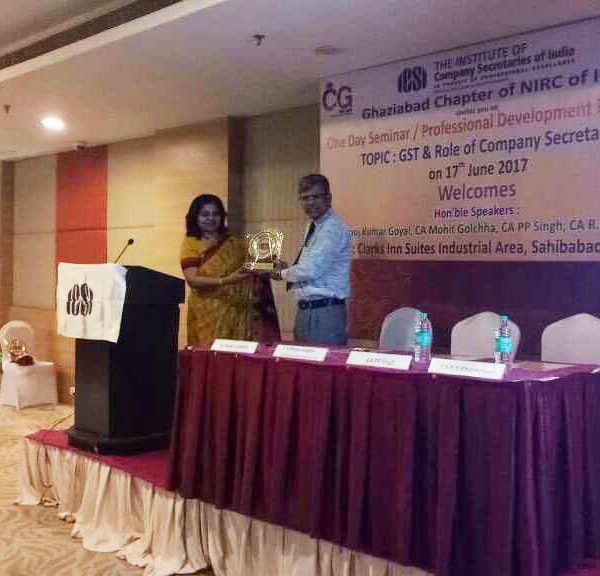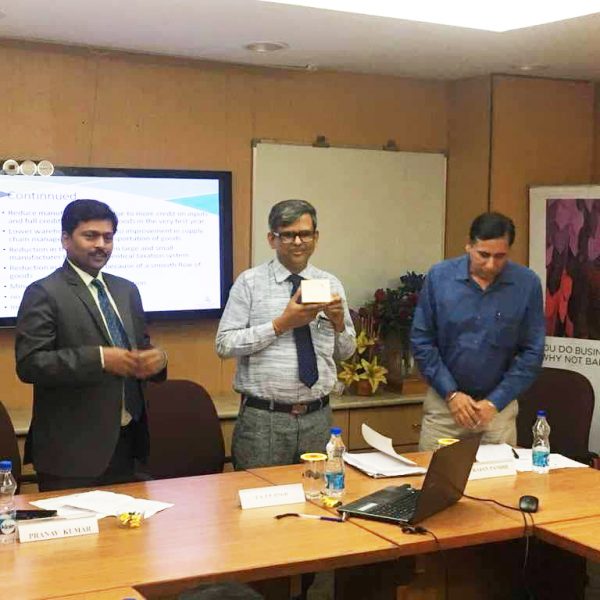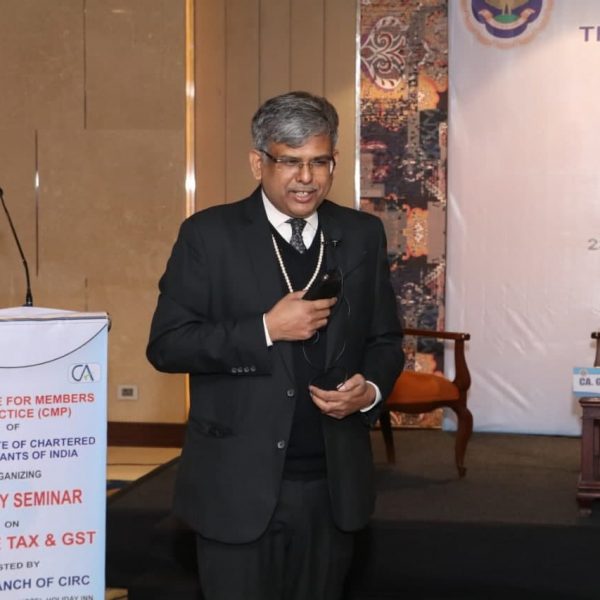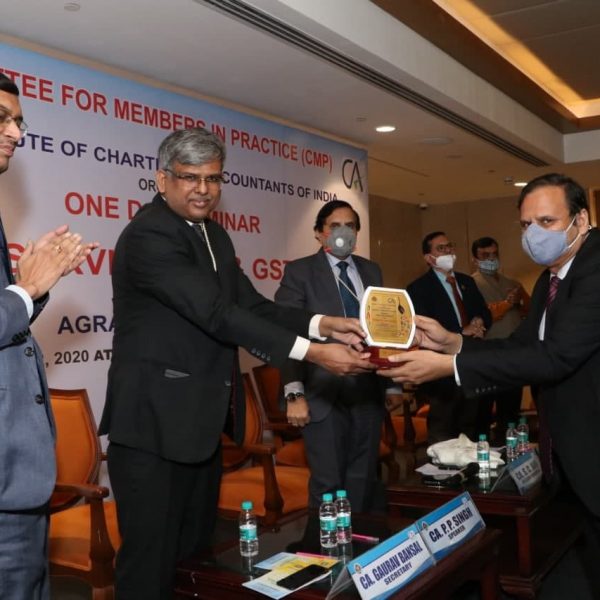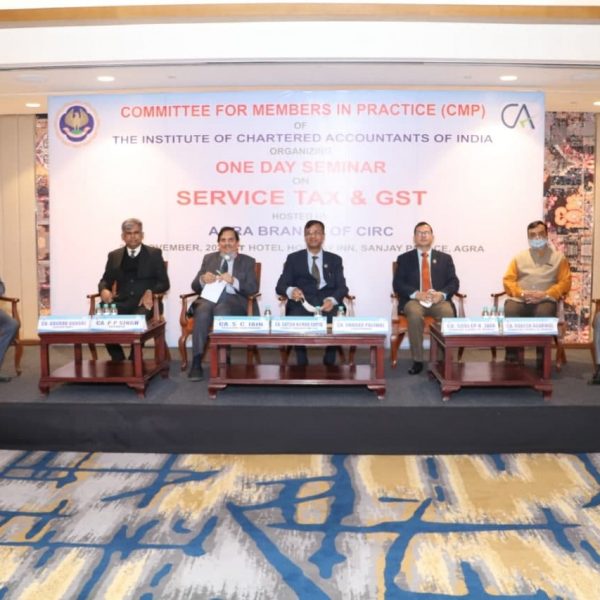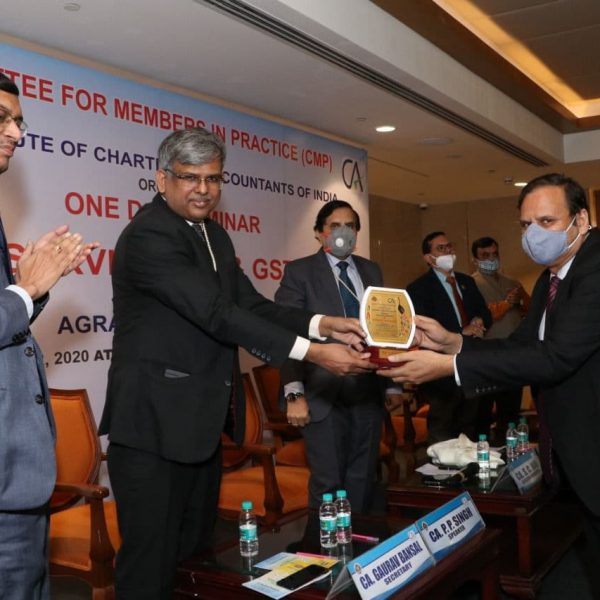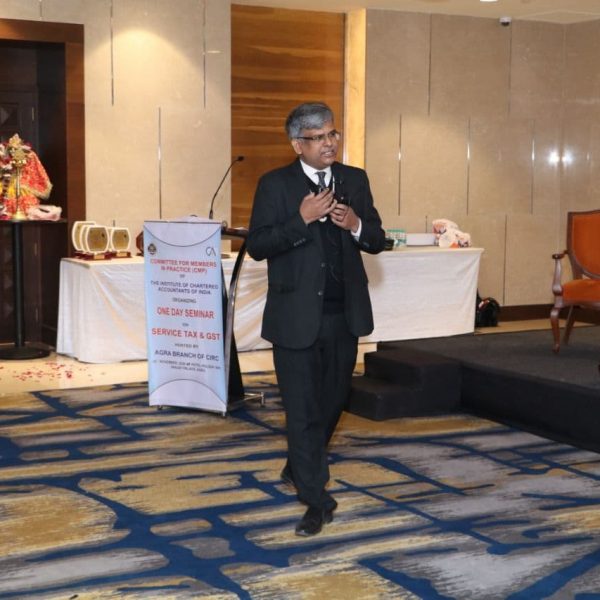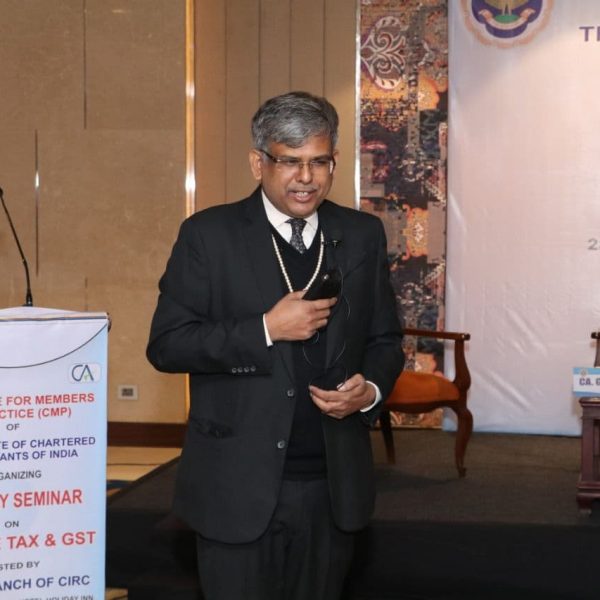How to Minimize GST?
Introduction: In this article effort has been made to minimize the output tax liabilities by availing provisions of GST law or payment of GST liabilities could be deferred for some time so that less requirement of working capital to run the business and hence saving of interest cost as well.
- 1. By availing available exemptions and concessional rate of tax: there are so many exemptions available under GST, some of the exemptions are popular and known to all but some of the specific exemptions are not known to all but they are also valid as per notifications in force. Some of the exemptions are available to particular suppliers where as other exemptions are available to particular recipient so in such cases if supply made to particular recipients then such supply are exempt. In several cases partial exemptions available where under instead of normal tax rate, concessional tax become applicable so ultimately by availing all those exemptions and concessional rate of tax we can minimize our output tax But while claiming exemptions/concessional rate of tax due to partial exemptions, we must ensure that all the conditions of exemptions/concessions must have been fulfilled because exemptions are interpreted strictly and benefit of doubt if any must be favoured to the government only and not to tax payer.
- Availing composition scheme: if input tax credit on inward supply of goods or services is meager or too low and if margin on the supply is too high and rate of tax is too high like 18% or 28% then certainly small tax payer operating in limited area and fulfilling’s the conditions of opting for composition scheme must opt for the same. Because this will not only reduce the tax liabilities but more time permitted for payment of GST and less compliance burden as well because such taxpayer have to pay tax quarterly and filing of return annually only so a big relief to the tax payer. Further such composition taxpayer is not eligible for availing input tax credit so no burden of matching of GSTR-2A/2B with inward supply and this is also a big relaxation. We can compare the tax liabilities of composition tax payer with regular tax with following illustrations. Amount in ₹
| Cases | Regular tax payer | Opting for composition | Opting for composition | Regular tax payer | Opted for composition. |
| Input tax credit | 3.00 lakh | 3.00 lakh | 3.00 lakh | 5.00 lakh | 11.50 lakh |
| Outward supply | 1 crore | 1 crore | 1 crore | 1 crore | 1 crore |
| Supply subject to output tax rate | 18 % | 18 % | 12 % | 12 % | 12 % |
| Composition tax rate @1% without ITC | 1% | 1% | 1% | 1% | 1% |
| Output tax | 18 lakh | 1 lakh | 1 lakh | 12 lakh | 1 lakh |
| Net tax liabilities as per normal | 15 lakh(18-3) | 15 lakh(18-3) | 9 lakh(12-3) | 7 lakh(12-5) | 0.5 lakh(12-11.5) |
| Tax as per composition | 1 lakh | 1 lakh | 1 lakh | 1 lakh | 1 lakh |
| Payment of tax liabilities | Monthly | Quarterly tax payment | Quarterly tax payment | monthly tax payment | Quarterly tax payment |
| GST return | Quarterly/monthly | Yearly return – GSTR-4 | Yearly return – GSTR-4 | Quarterly/monthly | Yearly return – GSTR-4 |
| Beneficial for tax payer | Opt for composition | Correct scheme already opted | Correct scheme already opted | Opt for composition | Regular taxation is more beneficial |
From the above illustrations it is clear that some time composition is more beneficial to tax payer where as in some cases regular scheme is more beneficial so accordingly before opting for regular/composition scheme we must have analysis of the comparative benefits and lax liabilities.
- Selection of proper vendor: selection of proper vendor is also important because if composition tax payer is getting supply from non- composition tax payer having GST registration then the input tax credit (ITC) will be the part of cost because composition taxpayer is not eligible for ITC. Therefore composition taxpayer should procure inward supply either from composition tax payer or unregistered person. Similarly if regular tax payer is purchasing supply from composition tax payers then also it will increase cost because due to non-availability of ITC the composition supplier has already added the input tax to cost of supply and as a result thereof inward supply cost will be much higher due to breakage of credit chain of ITC /no seamless flow of credit. So procurement policy should be
| Registered person- Regular tax payer. | § 1st preference- Procure from regular tax payer
§ 2nd preference- Procure from composition tax payer |
| Registered person – opting for Composition | § 1st preference- Procure from composition tax payer
§ 2nd preference- Procure from regular tax payer |
- Applicable tax rate: proper tax by regular tax and by composition tax payer will reduce the output tax liabilities and for that proper classification of supply into supply of goods or supply of services is must. After classification into supply of goods and supply of services proper HSN classification is also must because correct tax rate could be determined based on that. Certain HSN goods are subject to nil or lower tax rate where as others in higher tax rate bracket. Therefore it important to properly classify the rate of tax.
- Full availment of eligible ITC: There should be full availment of ITC so as to minimize the net tax liability while availing the ITC procurement planning should be in a way to get full ITC availment and utilization against output tax liability so as to minimize net output tax but at the same time we should not availed and utilize ITC where credit availment is Blocked under section 17(5) or credit availment is prohibited due to outward supply fully exempt or deemed to be exempt such as outward supply is subject to RCM. Further, wrong availment or utilization of credit may have serious consequence of Interest and Penalty. While availing ITC we must ensure the reporting by the supplier and reflection in GSTR 2A/2B as well as payment of tax and filling of return by the supplier besides the other condition for availment of ITC. If there is problem of ITC and supplier are located remotely or compulsion of procurement from different supplier then better for composition where no burden of ITC.
- Proper valuation of supply and adjustment for discount : Proper valuation may reduce the output tax liability particularly where the rate of outward supply and discount negotiated and finalized before making supply, so that benefit of discount on the invoice itself may reduce the output tax liability or at least discount must be known at the time of supply so that tax liability could be reduced by way of issuance of credit note within time limit specified under section 16(4) i. e on or before due date of filling of return of Sept month of the next F.Y. or filling of annual return whichever is earlier. There are several optional valuation scheme are also available under the valuation rules, where tax may be paid on lump sum amount instead of normal valuation under section 15 for example Money changer / authorised dealer has a special scheme, travel agent booking air tickets for also has special scheme, dealer of old car may discharge tax liability on sale less purchase value, special valuation for insurance policy. Further abatement from value of supply for pure agent payments also reduce the tax liability but care must be taken for qualifying definition of pure agent. For abatement on account of pure agent contract is very important documents. For detail refer section 15 of CGST/SGST Act and rule 27 to rule 35 of CGST/SGST Rules.
- Deferment of issuance of invoice till Time of supply (hereinafter called TOS) : GST is a tax on supply of goods or services or both but tax liability arises only when TOS triggered under section 12 for supply of goods and under section 13 for supply of service. There is a concept of deemed supply also where under if the invoice issued but supply not made even then to the extent of invoice issued shall be deemed to be a supply and tax liability arises. In other words issuance of invoice create tax liability so deferment of issuance of invoice in the case of supply of services or goods may lead to deferment of tax liability. Further there is 30 days’ time limit for issuance of invoice for supply of service in general, accordingly tax liability could be deferred by deferment of issuance of invoice. Further in the case of continuous supply of services invoice could be issued at the stage of milestone achieved or payment received from the recipient of supply or based on due date for payment ascertained from the contract as per section 31(5), accordingly tax liability could be deferred by deferment of invoice issuance. In the case of branch transfer the tax liability of supplying/transferring branch increased as soon as invoice issued so unless required issuance of invoice by branch could be avoided to deferred the tax liability. In the case of where supply is not confirmed from the customer it is better to send the goods through delivery challan on sale on approval basis because no tax liability till approval of goods by the customer for a maximum period of 6 months as per section 31(7). In other words tax liability could be deferred till approval by the customer by issuance of delivery challan in such a cases in place of invoice.
- Proper supply Chain management: In pre GST regime businessmen could transfer goods from one state to branch in another state without payment of tax against particular form F for branch transfer but the same is not available in GST era. In the GST regime branches are treated as distinct person so branch transfer is subject to tax .so unnecessary branch transfer could be avoided to minimize the output tax liability of supplying branch. This will reduce the not only the output tax liability but better working capital management for entity as a whole. while taking the decision of supply chain management by way of opening of branch or warehouse in different state, we must account for the logistic cost, warehousing cost, handling cost, cost of holding inventory, supply pattern, availability of input tax credit with transferring branch , net tax liability of transferring branch and other cost saving as well as outflow of output tax. So before taking decision for centralized invoicing or opening of several branches we must take into account the saving in cost Vs. output tax liability to be paid. Further n such a case of branch transfer, value of supply is being governed by rule 28, where under if item is fully creditable by the recipient branch , any value of supply could be taken as a valid value of supply . So in such a case the branch transferring the goods or service may take a decision on value of supply based on availability of ITC.
- Shifting of credit by way of cross charge or ISD for common service: There may be situation where head office or branch may have several inward supply having Input tax and no outward supply or very less outward supply may leads to accumulation of ITC which may remain ideal, whereas heavy output tax liability at some other branches from where supply is made. To avoid such a situation we must take benefits of ISD where accumulated credit could be shifted from centralized head office to other branches and benefit of setting off of output tax liability against the input tax could be availed. Another option is the cross charged by way of apportionment of accumulated credit where under centralized credit of input tax could be disbursed among various branches by way of issuing invoice of cross charge and such ITC credit could be fully utilised by way of setoff against output tax liability.
- Proper management of Local procurement Vs. interstate procurement to maximize the input tax credit set off: as we know that after amendment in the set off of credit of ITC by introducing new section 49A, 49B, rule 86, 86A, 86B, 88A etc. we have to firstly set off all the balances of ITC of IGST against our output tax liabilities of IGST and balance if any of IGST credit against CGST output tax liabilities or SGST output tax liabilities. We can set off CGST credit balance only when ITC balance of IGST become nil. Further CGST ITC balance have to be first utilise against IGST output tax liabilities and balance if any can be set off against CGST output tax liabilities and SGST credit balance could be utilised only once credit balance of IGST and CGST become nil. Furthermore credit balance of SGST shall be utilized firstly against IGST output tax liabilities and balance if any shall be utilised against SGST output tax liabilities. In other words those procuring goods locally within state can utilise full ITC of both CGST and SGST but those procuring goods or services from other state may not be in a position to utilize full ITC if outward supply of such taxpayer is intra state .so procurement policy of purchase within state and outside state is vital to minimize net output tax liabilities if outward supply is intra state .i.e local sale. Above could be explained by following illustrations:
| Particulars | Case-1 | Case2 | Case-3 |
| Output tax | CGST – ₹ 2 Lakh
SGST – ₹ 2 Lakh |
IGST – ₹ 1 Lakh
CGST – ₹ 1.50 Lakh SGST – ₹ 1.50 Lakh |
IGST – nil
CGST – ₹ 2.00 Lakh SGST – ₹ 2.00 Lakh |
| Input tax | CGST – ₹ 1.50 Lakh
SGST – ₹ 1.50 Lakh IGST — ₹ 0.30 Lakh |
CGST – ₹ 0.85 Lakh
SGST – ₹ 0.85 Lakh IGST – ₹ 1.60 Lakh |
CGST – ₹ 0.85 Lakh
SGST – ₹ 0.85 Lakh IGST – ₹ 1.60 Lakh |
| Credit of ITC utilization | Firstly IGST shall be utilized fully- ₹ 0.30 say against CGST
Secondly CGST ITC shall be utilized 1.20lakhs 3rdly SGST credit of ITC shall be utilized of ₹ 1.50 lakh |
Firstly IGST shall be utilized fully- ₹ 1.00 Lakh against IGST liabilities and balance IGST credit towards CGST/SGST liabilities say CGST liabilities adjusted of ₹ 0.60
Secondly CGST ITC shall be utilized for 0.85 Lakhs CGST liabilities 3rdly SGST credit of ITC shall be utilized of ₹ 0.85 lakh SGST liabilities |
Firstly IGST shall be utilized fully- ₹ nil Lakh against IGST liabilities and balance IGST credit towards CGST/SGST liabilities say CGST liabilities adjusted of ₹ 1.60
Secondly CGST ITC shall be utilized for 0.40 Lakhs CGST liabilities and Credit balance of CGST = ₹ 0.45 Lakhs 3rdly SGST credit of ITC shall be utilized of ₹ 0.85 lakh SGST liabilities, balance SGST ITC –NIL. |
| Net output tax payment through cash ledger | CGST – ₹ 0. 20
SGST – ₹ 0.50 |
IGST – NIL
CGST – ₹ 0. 05 Lakh SGST – ₹ 0.65 |
IGST – NIL
CGST – ₹ NIL SGST – ₹ 1.15 Lakh |
From the above example it is clear that taxpayer have to pay tax of ₹ 1.15 lakh even if credit balance of CGST of ₹ 0.45 in hand. So proper management is important to minimize the net output tax liabilities. Common rule of maximum ITC utilization shall be as under:
| Inter-state supply | Procurement may be local/ intra state or interstate no difference at all. |
| Intra state supply | Procurement preference – intra state/local purchase and inter-state under compulsion. |
11 Bettor job work management: by utilizing job work procedure u/s 143 of the CGST/SGST Act we can avail full credit of ITC of input as well as ITC of capital goods even if goods/capital goods sent directly to job worker and we can sale finished goods directly from job worker premises or can bring back semi processed material from job worker if further processing is required. Only important aspect is that we have to brought back material from job worker within 1 year/ extended 1 year (capital goods within 3 years plus extended 2 years, if required but no extra burden of output tax due to availability of ITC of material with job worker. If job worker is not registered in GST better to purchase input and capital goods by the principal and availing full credit by principal even if goods/capital goods used by job worker.
Conclusion: It has been tried to explain some of the tips of tax minimization and tax deferment in legal way and besides that there are much more tools and hope it is useful for the readers. They may utilize such tools in working capital management. For any clarification you may feel free to contact CA P P SINGH @ 9711521060/9871229590 or at cappsingh@gmail.com or info @ppsingh.org

